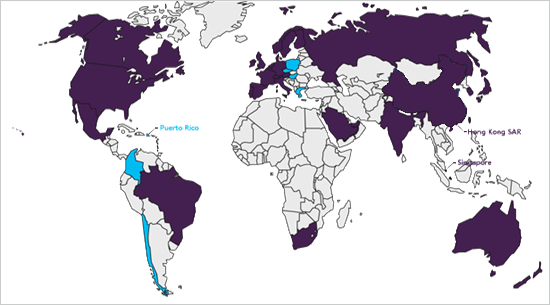Microsoft has rolled out a notable update to its Kinect for Windows SDK today, while also announcing the availability of the Kinect for Windows sensor in China. The new version of the SDK introduces a number of improvements which allow developers greater access to sensor data, plus it adds support for Windows 8, and offers improvement to the Kinect Studio developer tools.
The Kinect for Windows platform allows for more commercial implementations of the Kinect technology, and has been designed specifically for use with Windows PCs, as opposed to the Xbox 360. The sensor connects with the PC via a USB cable, and is now available in 32 markets worldwide where it’s sold for $249 USD. The SDK is free, however, and Microsoft doesn’t charge fees for runtime licenses.
For developers building on the Kinect platform, the updated SDK now opens up API access to a wider range of sensor data, including the sensor’s 3-axis accelerometer (for detecting orientation), the infrared stream, and it provides extended-range depth data details beyond 4 meters. Developers can also build applications that set the color camera settings, like the brightness and exposure, and the SDK now allows for faster toggling of the IR to support overlapping sensors, says Microsoft.
What this means, for those who don’t speak developer, is that the Kinect commercial ecosystem can now expand to support a broader number of applications, including those meant for use in manufacturing (this one, thanks to its new ability to access extended-range depth data), as well as apps that could run in low-light settings. Microsoft hints that movie theaters and museums might take advantage of some of these latter changes, specifically.
In addition to the SDK update, Kinect Studio, which allows developers to work with the sensor SDK has been updated as well, and it includes samples that show how to use all the new SDK features, among other things.
Also new today is Windows 8 support, meaning developers can build a Kinect for Windows solution for Windows 8 desktop apps. The SDK supports development with Visual Studio 2012, Microsoft .NET Framework 4.5, and now works on Windows running in a virtual machine.Microsoft Hyper -V, VMWare, and Parallels has been tested. (Previously, Windows 8’s “Consumer Preview” was supported, but not the final release.)
The Kinect for Windows Sensor is now available in China, as noted above, and is soon rolling out to Chile, Colombia, the Czech Republic, Greece, Hungary, Poland, and Puerto Rico.
The Kinect for Windows platform is being used to develop several interesting experiments in motion detection, like a virtual dressing room which lets consumers try on clothes via Kinect, for example. It has also been used in education, in hospitals, and Nissan used Kinect to build buzz around the Pathfinder pre-launch.

